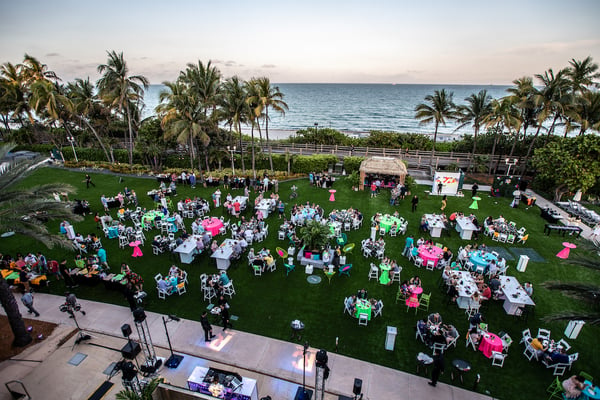Exotic destinations. Live music and performances. Meals crafted and plated by Michelin-starred chefs. Excursions to historic sites. Sounds wonderful, doesn’t it? You might have heard about these trips from friends and family, or maybe even seen posts on social media. While these components might be included in incentive travel programs, there’s more that goes into successful travel experiences than you may think.
Incentive travel programs are designed to boost morale, reward individuals or teams, and ensure that everyone has a good time. If you haven’t experienced or planned an incentive trip yourself, there are a few things you should know.

The Truth About Incentive Travel Programs
Incentive travel programs have long been used to help businesses reward employees for hitting goals while motivating them to continue high-level performance. But in recent years, there has been a significant shift in the purpose of incentive travel experiences.
In fact, while many organizations utilize incentive trips because of their ability to increase sales and ROI, there has also been an emphasis on the other benefits, which include company culture, connections, and engagement. In their 2023 Incentive Travel Index report, the IRF reported that 58% of respondents are noticing a shift in importance to soft benefits in upcoming incentive programs.
While these soft benefits are becoming increasingly important, businesses still need to focus on individual employees. Luckily, incentive travel programs are often designed to do just that. Because awards ceremonies are frequently a main component, companies usually take a moment to call out key players who have made an impact within the company.
In addition, these events boost morale and loyalty. Events that bring teams together to deepen connections also improve attendee’s performance, allowing them to better reach their goals at work. This is especially true for remote workers who may have few opportunities to gather with coworkers face to face.
Common Incentive Travel Misconceptions and the Truth Behind Them
Even if you haven't experienced incentive travel for yourself, you probably have heard about these trips. Unfortunately, there are a few misconceptions surrounding what actually happens on these trips.
To clear the air, we’ve compiled a list of common incentive travel misconceptions and the truth behind them.
Misconception: The trip is reward enough, so no need for gifting.
Reality: Gifts serve as tangible reminders of incentive travel experiences, giving an ongoing morale boost.
Guests are already being rewarded with a chance to travel, so why give them gifts? The truth is, swag bags are excellent for maintaining the boost in motivation that attendees experience during incentive programs. Gifts that play into the destination that you choose can be excellent options – whether it’s something that can be used while on the trip or just reminders of the place that you traveled to. Additionally, reusable gifts (such as branded water bottles) are environmentally friendly, so you're also displaying company values with the gift.
Another gift that resonates well with attendees is a photo album filled with pictures from the trip. These can serve as coffee table books, conversation starters, and general reminders of their experience once they’ve returned to work.

Misconception: Event apps are unnecessary and keep attendees glued to their phones.
Reality: Event apps streamline event logistics, provide real-time data, and deliver important information to attendees.
This misconception couldn’t be further from the truth. Not only are event apps easy to incorporate into incentive programs, but the truth is that this technology is what guests would prefer to use.
Distributing information via physical pieces of paper means important information is more likely to get lost (as well as this not being the most environmentally friendly option). The same goes for email inboxes that may be overflowing with junk mail and messages that are left unread. So the obvious solution is an event app. Event planners can then keep track of important incentive program details and ensure that this information is easily accessible to all attendees.
And if there’s anything pressing that pops up, you can deliver push notifications through your app as well. Plus, these apps do a great job of capturing attendee information and any potential feedback they may have.
Misconception: An incentive travel program is just a big party that doesn’t foster lasting connections.
Reality: Incentive programs ensure employees are recognized for their work while rewarding them with fun activities and opportunities to connect.
Of course, attendees should be able to have fun and let loose. After all, incentive travel programs serve as a reward. But there’s more to it.
Many incentive travel programs end with a party, farewell dinner, or concert to celebrate the hard work of team members. However, that’s not the only goal of incentive travel. Many companies incorporate awards celebrations to reward specific individuals for their achievements. These programs might also include off-site excursions that allow guests to explore the destination a bit more as another reward for their commitment to the company. Plus, this time spent with others in their organization is a great way to build meaningful connections.
Additionally, there tend to be breaks in the schedule, which is intentional. Because incentive trips are a reward, guests should also be given a chance to relax. Any gaps in schedules allow attendees to relax by the pool, explore the local community, or take some much needed time for themselves.
Misconception: Money is always a more effective motivator than travel.
Reality: Many employees find more value in experiences rather than monetary rewards.
While monetary compensation is, of course, an important part of any job, that doesn’t mean it’s always the most effective way to boost motivation. In fact, extra monetary rewards and bonuses might only reap short-term benefits.
Instead, employees are often more interested in feeling valued in other ways, and this is especially true among younger workers who prefer experiences over gifts. Travel opportunities alone are excellent rewards, and adding individual awards for performance can be even more motivating. Plus, when these incentive programs foster deeper connections among team members, they’re more likely to work more efficiently and collaboratively once returning to work.

Misconception: Incentive trips are one-size-fits-all.
Reality: Incentive travel programs need to be planned in a way that aligns with attendee preferences.
Every incentive travel program is going to have a different group of attendees. This means new people looking for activities and destinations that align with what they want and value. And depending on the size of the group in attendance, you could be hosting an event for a wide range of demographics. Younger workers, experienced professionals, sales teams, marketing teams, customer-facing teams, and internal teams all might be included in one trip. That’s a lot of variation among guests, so though not everything planned will satisfy each person in attendance, you need to plan for options that cater to your unique travel group.
Keep in mind that by 2025, it’s estimated that millennials will make up about 75% of the global workforce. And if you’re planning an incentive trip for a company that has hosted similar programs in the past, those attendees won’t want a repeat of their past experiences.
Instead, they’ll be more interested in something fresh and exciting. This means you need a new theme, a new destination, and new forms of entertainment. If you’re unsure of how to plan an incentive trip with your attendees in mind, start by asking them their preferences using a survey to gain information before important decision making.
Misconception: You can easily plan a successful incentive travel program without an event planner.
Reality: Event planners have the knowledge and experience needed to effectively organize incentive trips.
Successfully pulling off an incentive travel program requires detailed planning. There are various moving parts and logistics involved, which can quickly become overwhelming if you haven’t planned this kind of program before. From ensuring everyone has smooth travels to your destination to booking a variety of excursions and local activities, there are so many elements to consider when planning an incentive.
Working with event planners means businesses gain insider information on the best venues and travel logistics. When hotel and airfare costs are estimated to make up almost half of all incentive travel program expenses in 2024, working with someone who has access to group travel benefits and deals is a sure-fire way to cut costs.
How to Make Incentive Travel Experiences a Reality
Setting expectations is only part of the planning process for incentive trips. You may have an idea of your event goals, your preferred type of entertainment, and your most desirable location, but there are so many additional details. That’s where event planners can step in to help.
These trips bring teams together to boost collaboration, deepen connections, and ultimately enhance productivity and motivation at work. Because there are so many benefits to be realized from these kinds of events, make sure your planning efforts are successful. The skilled event planners at Bishop-McCann have the knowledge and expertise needed to help companies effectively reward employees with incentive travel.
To bring your incentive travel plans to life, connect with Bishop-McCann’s event planners today!

